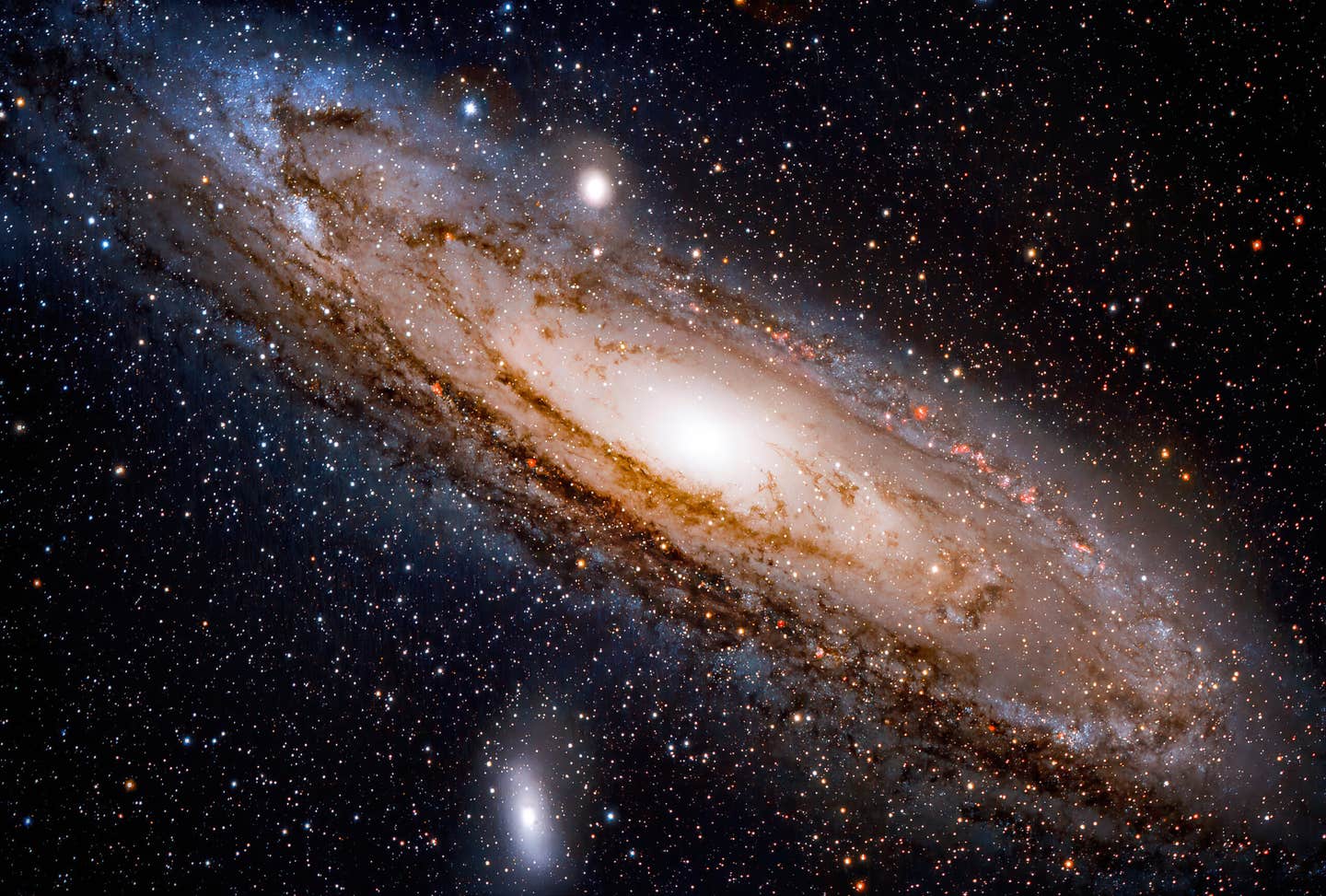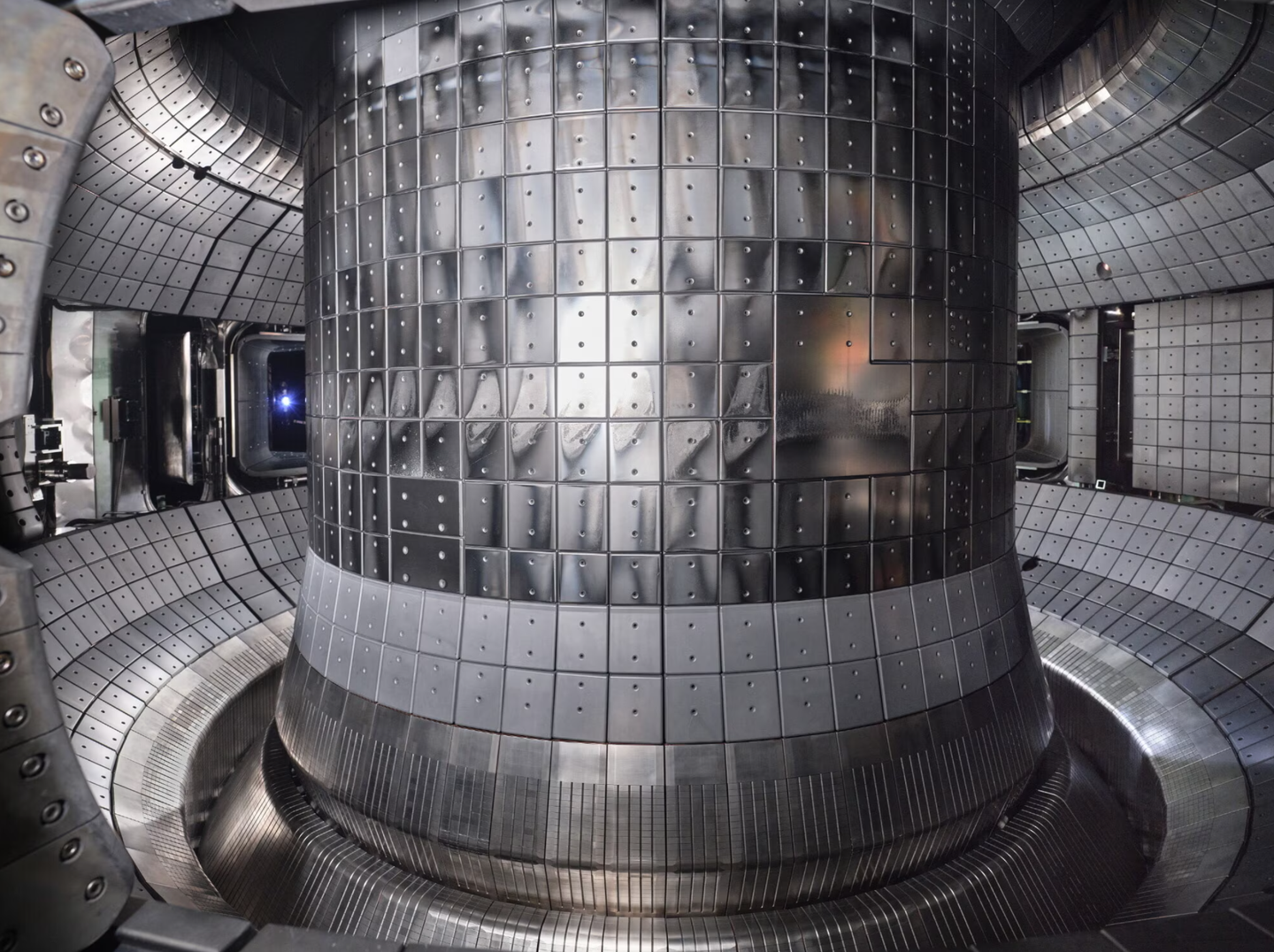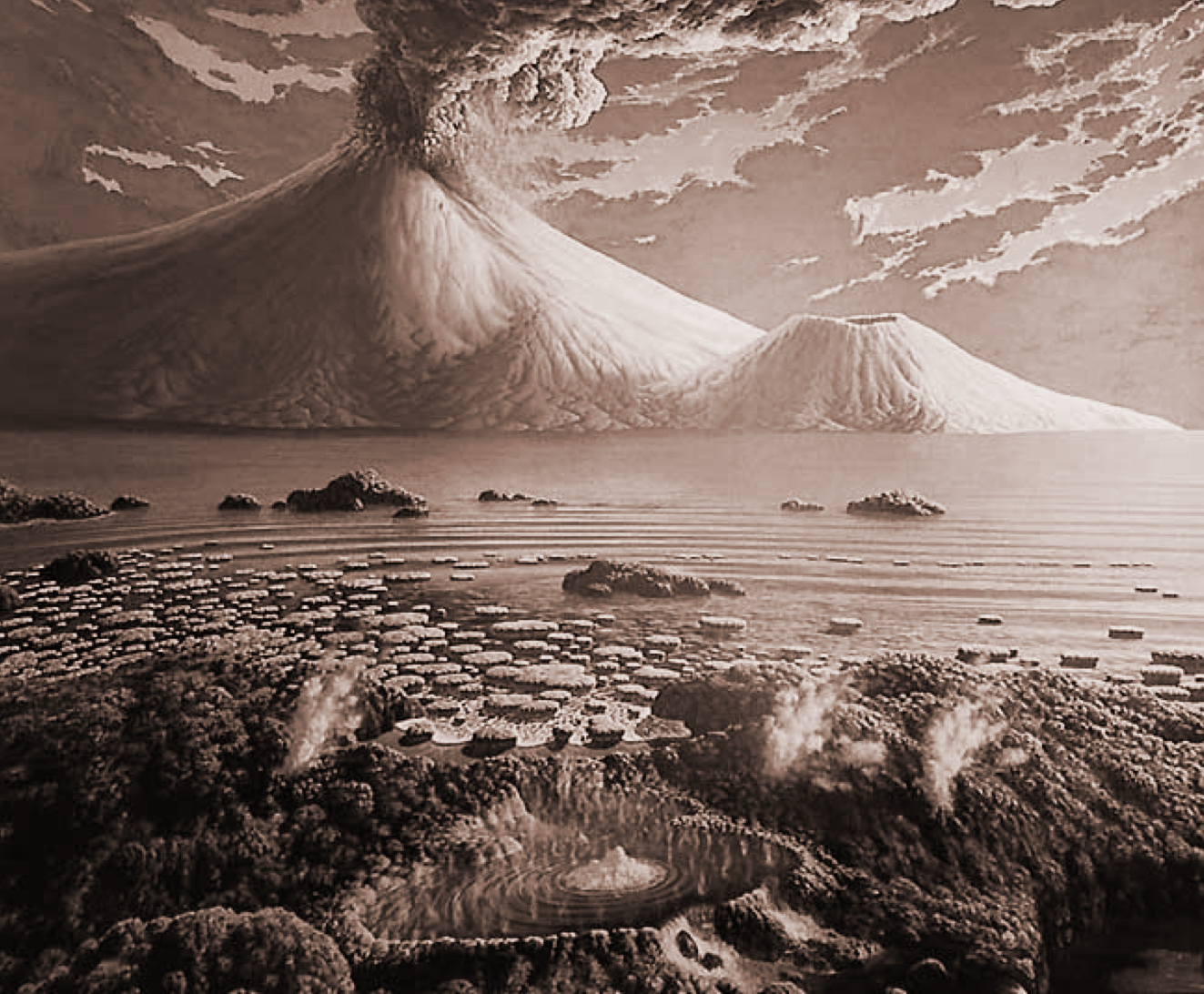Galaxies are much much bigger than astronomers previously thought
A groundbreaking study has mapped the circumgalactic medium of a distant galaxy, revealing how gas cycles within galaxies and influences their evolution.

A halo of gas enveloping a galaxy’s stellar disc, makes up about 70% of the galaxy’s mass. (CREDIT: David (Deddy) Dayag / CC BY-SA 3.0)
Where does a galaxy end and deep space begin? This seemingly straightforward question becomes much more complex when examining the gas surrounding galaxies, known as the circumgalactic medium (CGM).
A new study, published in Nature Astronomy, sheds light on this elusive area, revealing that our own Milky Way may already be interacting with the neighboring Andromeda galaxy.
The CGM, a halo of gas enveloping a galaxy's stellar disc, makes up about 70% of the galaxy’s mass—excluding dark matter. For years, it remained mysterious, with observations limited to studying the light from background objects, such as quasars, absorbed by the gas. This method provides only a narrow, pencil-like view of the gas.
However, this new research utilized cutting-edge deep imaging techniques to observe the CGM of a star-bursting galaxy located 270 million light years away. The findings reveal that the cloud of gas surrounding the galaxy extends 100,000 light years into space, the farthest distance the team was able to observe. This glowing cloud of gas is a stark contrast to the galaxy’s starlight, which only reaches about 7,800 light years from the galaxy’s center.
To appreciate the scale, imagine the galaxy as a bright disc, with a massive gas cloud extending far beyond its visible edges. The study observed hydrogen and oxygen physically connecting from the galaxy’s center out into space. These findings indicate that the conditions within the gas changed as it extended further into space.
Related Stories
“We found it everywhere we looked, which was really exciting and kind of surprising,” says Associate Professor Nikole M. Nielsen, lead author of the study. Nielsen is a researcher at Swinburne University and ASTRO 3D, and an Assistant Professor at the University of Oklahoma.
This research collaboration also included scientists from institutions like the University of Texas at Austin, California Institute of Technology in Pasadena, University of California San Diego, and Durham University. The diverse team enabled a detailed exploration of the CGM, revealing how a galaxy’s influence transitions into the wider cosmic web.
“We’re now seeing where the galaxy’s influence stops, the transition where it becomes part of what’s surrounding the galaxy,” explains Dr. Nielsen. “Eventually, it joins the wider cosmic web and other galaxies. These are all usually fuzzy boundaries. But in this case, we seem to have found a fairly clear boundary in this galaxy between its interstellar medium and its circumgalactic medium.”
The study’s observations revealed stars within the galaxy ionizing gas with their photons. “In the CGM, the gas is being heated by something other than typical conditions inside galaxies,” Nielsen continues. This heating likely stems from diffuse emissions from galaxies across the Universe, with possible contributions from shock waves.
The question of where a galaxy truly ends and space begins may finally have some answers thanks to this discovery. The key to this breakthrough was the Keck Cosmic Web Imager (KCWI), a powerful instrument housed at the Keck Observatory in Hawaii. The KCWI’s integral field spectrograph, one of the most sensitive instruments of its kind, allowed the research team to capture detailed data of the galaxy’s gas.
“These one-of-a-kind observations require the very dark sky that is only available at the Keck Observatory on Mauna Kea,” says Associate Professor Deanne Fisher, one of the study’s co-authors and a Swinburne University researcher.
Thanks to ASTRO 3D's partnership with the Keck Observatory, Swinburne scientists gained access to this advanced technology. “Swinburne’s partnership with the W.M. Keck Observatory has allowed our team to really push the boundaries of what is possible,” says Associate Professor Glenn Kacprzak, another co-author of the study. “KCWI has really changed the game on how we can now measure and quantify the diffuse gas around galaxies.”
Rather than producing a single spectrum, KCWI enabled the team to collect thousands of spectra in a single image. This ability to gather such a wealth of data simultaneously marked a significant step forward in understanding the CGM. “It is the very first time that we have been able to take a photograph of this halo of matter around a galaxy,” says Professor Emma Ryan-Weber, Director of ASTRO 3D.
This breakthrough adds another piece to the ongoing puzzle of galaxy evolution. Astronomers have long questioned how galaxies evolve, how they acquire gas, process it, and eventually recycle or expel it. The CGM plays a central role in this cycle. “The circumgalactic medium plays a huge role in that cycling of gas,” says Dr. Nielsen.
By studying the CGM around different types of galaxies—those that are actively star-forming, those that have stopped, and those transitioning between states—scientists can better understand how changes in this gas might drive transformations within the galaxies themselves.
These findings contribute directly to ASTRO 3D’s mission to understand how galaxies build mass over time. “It helps us understand how galaxies build mass over time,” adds Professor Ryan-Weber.
The study’s implications extend beyond this single galaxy. The CGM might also reveal how galaxies interact with one another. Dr. Nielsen suggests that the CGMs of the Milky Way and Andromeda could already be overlapping and interacting, potentially offering insights into the future collision between these two galaxies.
This exciting discovery, made possible by advances in technology and international collaboration, moves us closer to answering some of astronomy’s biggest questions. As we learn more about the vast structures surrounding galaxies, we also come closer to understanding how galaxies like the Milky Way evolve, interact, and influence the universe around them.
Note: Materials provided above by The Brighter Side of News. Content may be edited for style and length.
Like these kind of feel good stories? Get The Brighter Side of News' newsletter.



